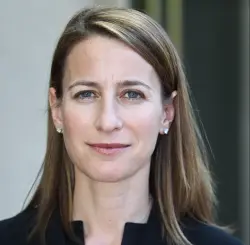For those of us interested in the question of scale, Teaching at the Right Level (TaRL)—a pedagogical approach to remedial education developed by the non-governmental Indian organization Pratham—provides an excellent case study to explore. TaRL uses a simple assessment tool to identify reading and math levels of children—generally in grades three to five—and then provides them with engaging, hands-on instruction targeted at their learning level, rather than based on their age or grade. For more than 15 years, Pratham, in partnership with the Abdul Latif Poverty Action Lab (JPAL), has tested and rigorously evaluated a variety of approaches to delivering the program. These include volunteer facilitators during summer camp to teachers providing the targeted instruction during school hours.
Today, TaRL reaches more than six million children in India through Pratham’s partnership with state governments, as well as through direct implementation. Many other countries around the world have taken note and are now adopting and adapting the model. From Ghana to Kenya to Zambia, more than eight countries in Africa are testing various approaches to TaRL, directly or in partnership with governments.
Many involved with designing or delivering TaRL point to the notion of “energy and spirit” as a core component. This energy and spirit is visible in young children learning to read for the very first time, and it is apparent in teachers and facilitators on the ground, who energetically engage with children and capture their attention.
This naturally begs the question: How does one scale spirit? An amorphous, human-centric response is something that isn’t easily codified in a manual or replicated and unfurled around the world. While we don’t claim to have the answer, it may have something to do with to a few key ingredients:
1. Learning by doing: A central tenet of TaRL is to figure it out by doing it. In contrast to the typical “train the trainer” model where those who were trained train the next cohort–in TaRL those who have actually implemented train others on the program. As the nonprofit Young 1ove has started to scale-up TaRL in Botswana, rather than train 100 facilitators right away, the organization trained five, who trained the next 30, who will train the next 50 and so on. The scale-up is staged to enable learning by doing. The trainers both understand the program and experience the program. The spirit is palpable. Perhaps one of the secrets to scaling spirit is by experiencing change firsthand.
2. Cultivating leaders of practice: Visionary leaders at the school, community, and government level have played key roles in driving TaRL’s expansion and impact. When these leaders see the change in children’s learning levels themselves, they buy into the approach on a much deeper level. These leaders become the Paul Revere’s—or messengers—spreading the essential principles behind TaRL, including its energy and spirit. When a state government official in Nigeria first heard about TaRL, he raised two concerns: One, TaRL should be in English and two, teachers in Nigeria would find it challenging to implement the program effectively. The official was invited to observe the teachers’ training. That visit changed his mindset. When top-level officials observe classes and interact with children, teachers, and parents, motivation flows in both directions—from officials to communities and communities to officials.
3. Capitalizing on natural spirit: Most people want to do some good in their community–they just often don’t know where to start. The beauty of TaRL is that it is simple, focused, and anyone can do it: brothers, sisters, teachers, volunteers, parents, and teachers. The levelling tool is as quick as an eye-exam—asking students to recognize numbers and read words in five minutes or less to equip anyone to teach at the right level. The simplicity and focus of the intervention enables communities to act, capitalizing on natural spirit before it is extinguished. Scaling spirit can start by feeding the spirit that’s already there with simple and accessible tools.
4. Showing what’s possible: Finally, something as nebulous as spirit and energy would be unlikely to spread if it did not include tangible and visible results along the way. In the case of TaRL, real improvements in children’s reading and math are seen, often within a few short weeks. In Botsalano Primary School in Botswana, the percentage of students who could not do a mathematical operation fell from 22 percent to just one percent in 15 days. Teachers, school administrators, families, and children spread the word—change is possible.
As governments, organizations, and communities continue to adapt and scale TaRL around the world, we look forward to learning more about the key ingredients behind how spirit spreads.
Photo credit: Young 1ove




Commentary
How do you scale spirit?
October 17, 2018